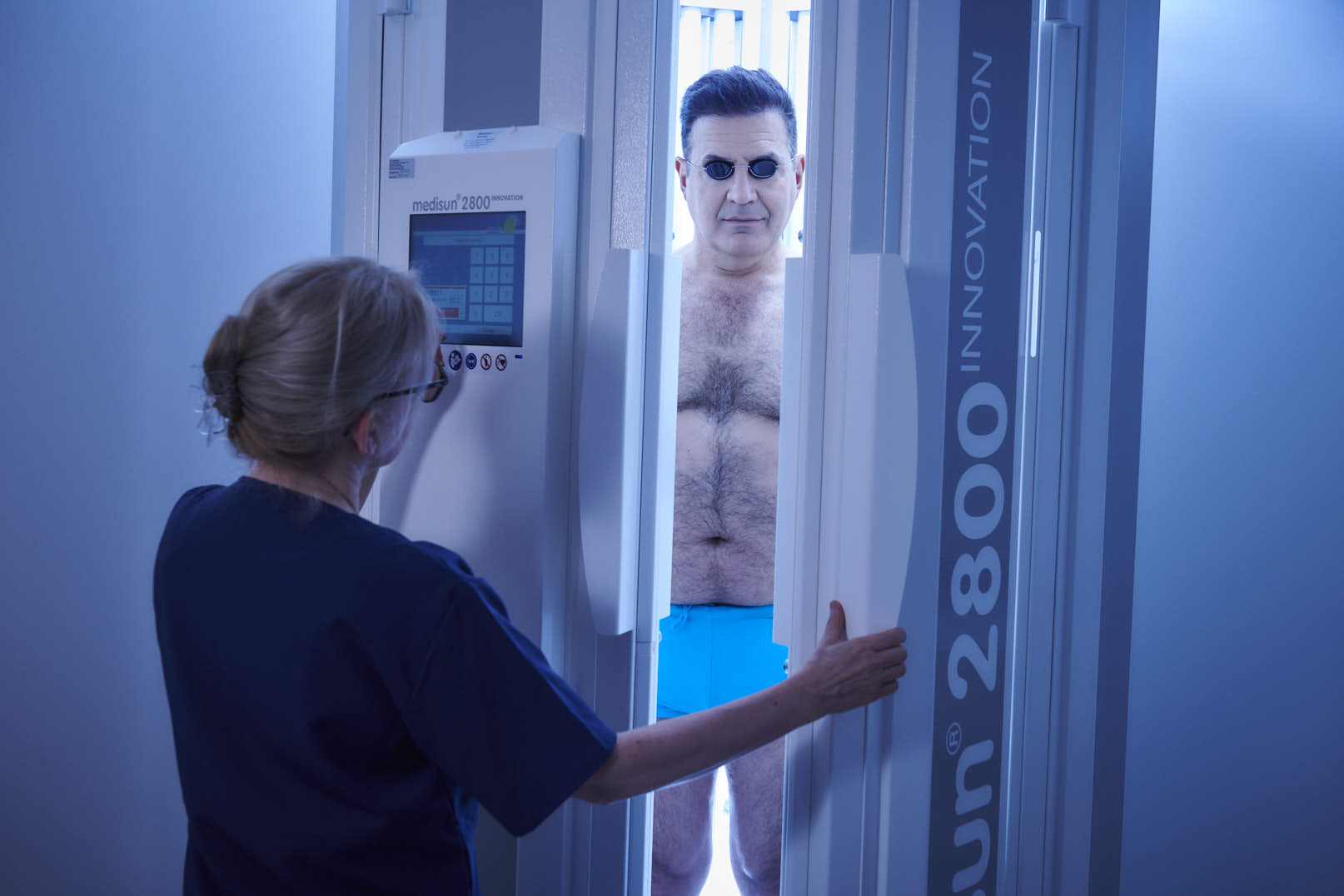Dr Hiva Fassihi
Consultant Dermatologist
Specialist expertise: Dermatology, General Dermatology, Mole Checks, Mole Mapping, Skin Cancer, Skin Cancer Surgery, Phototherapy, Acne, Rosacea, Eczema, Paediatric Dermatology, Sun Sensitive Disorders.
Dr Hiva Fassihi and Dr John Ferguson discuss Phototherapy and how it differs from UVB Phototherapy.

Phototherapy is the use of artificial ultraviolet light, within a cabinet with fluorescent bulbs, to treat certain skin disorders. Sometimes smaller ultraviolet light sources are used for more targeted treatment of affected areas.
Narrowband UVB phototherapy is ultraviolet light in the UVB range, at a wavelength of 311 nanometres. This is the preferred method of phototherapy nowadays as it is much more effective than the old fashioned broadband UVB phototherapy. PUVA phototherapy (psoralen + UVA) continues to be used in some indications.
Phototherapy works by temporarily shutting down the skin's immune function and reducing the rate of skin cell turnover. It also helps to increase pigmentation and build up the skin barrier. Narrowband UVB is particularly effective for conditions like psoriasis, eczema, and vitiligo. It can also be used for pruritus, prurigo, lichen planus and urticaria. Those with polymorphic light eruption can also be treated with narrowband UVB phototherapy to reduce their sensitivity to sunlight.
Assessment prior to starting phototherapy involves a test dose called MED (minimal erythema dose) to determine the first dose of treatment. Usually, the first treatment itself is short, sometimes a few seconds, and the duration of each treatment increases to a few minutes, over about 12 to 50 treatments, two to three times per week, depending on the skin condition being treated.
With the assistance of a specialist nurse, the patient stands in a cubicle and exposes their skin to a carefully calculated and personalised dose of ultraviolet light. Protective eye goggles are worn during treatment.
Treatments are usually short initially, extending to a few minutes by the end of the course. Treatment times vary from person to person depending on skin type and the condition being treated.
The risks include sunburn-like reactions, rashes like polymorphic light eruption, and occasional cold sore reactivation. If a patient has several hundred treatments, the risk of non-melanoma skin cancer, particularly basal cell carcinoma, can increase a little depending on the number of treatments that the patient has, skin type, and background risks of skin cancer. Thirty treatments are usually found to be roughly equivalent to going on a sunny holiday.